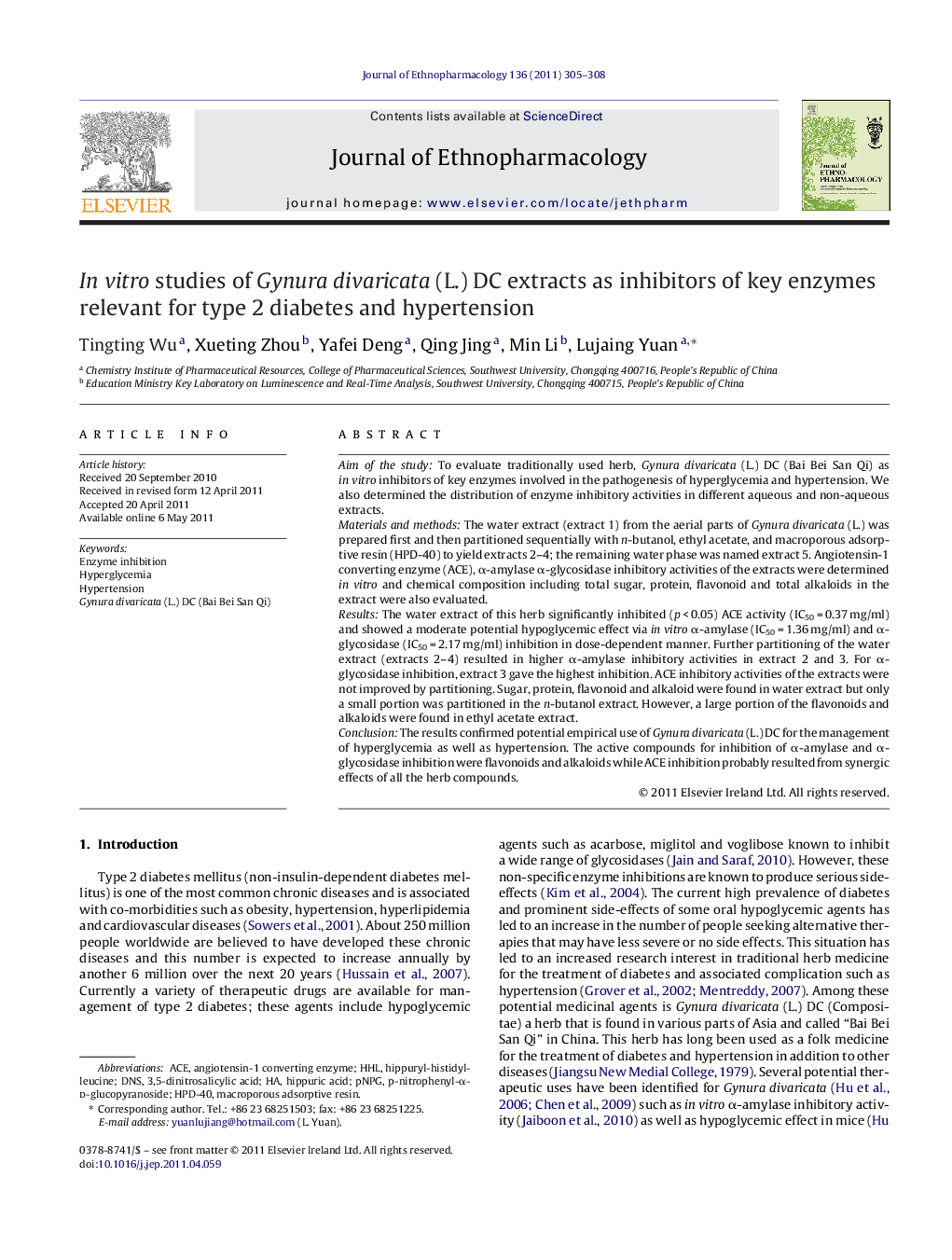| Article ID | Journal | Published Year | Pages | File Type |
|---|---|---|---|---|
| 5839063 | Journal of Ethnopharmacology | 2011 | 4 Pages |
Abstract
Aim of the studyTo evaluate traditionally used herb, Gynura divaricata (L.) DC (Bai Bei San Qi) as in vitro inhibitors of key enzymes involved in the pathogenesis of hyperglycemia and hypertension. We also determined the distribution of enzyme inhibitory activities in different aqueous and non-aqueous extracts.Materials and methodsThe water extract (extract 1) from the aerial parts of Gynura divaricata (L.) was prepared first and then partitioned sequentially with n-butanol, ethyl acetate, and macroporous adsorptive resin (HPD-40) to yield extracts 2-4; the remaining water phase was named extract 5. Angiotensin-1 converting enzyme (ACE), α-amylase α-glycosidase inhibitory activities of the extracts were determined in vitro and chemical composition including total sugar, protein, flavonoid and total alkaloids in the extract were also evaluated.ResultsThe water extract of this herb significantly inhibited (p < 0.05) ACE activity (IC50 = 0.37 mg/ml) and showed a moderate potential hypoglycemic effect via in vitro α-amylase (IC50 = 1.36 mg/ml) and α-glycosidase (IC50 = 2.17 mg/ml) inhibition in dose-dependent manner. Further partitioning of the water extract (extracts 2-4) resulted in higher α-amylase inhibitory activities in extract 2 and 3. For α-glycosidase inhibition, extract 3 gave the highest inhibition. ACE inhibitory activities of the extracts were not improved by partitioning. Sugar, protein, flavonoid and alkaloid were found in water extract but only a small portion was partitioned in the n-butanol extract. However, a large portion of the flavonoids and alkaloids were found in ethyl acetate extract.ConclusionThe results confirmed potential empirical use of Gynura divaricata (L.) DC for the management of hyperglycemia as well as hypertension. The active compounds for inhibition of α-amylase and α-glycosidase inhibition were flavonoids and alkaloids while ACE inhibition probably resulted from synergic effects of all the herb compounds.
Keywords
Related Topics
Health Sciences
Pharmacology, Toxicology and Pharmaceutical Science
Pharmacology
Authors
Tingting Wu, Xueting Zhou, Yafei Deng, Qing Jing, Min Li, Lujaing Yuan,
